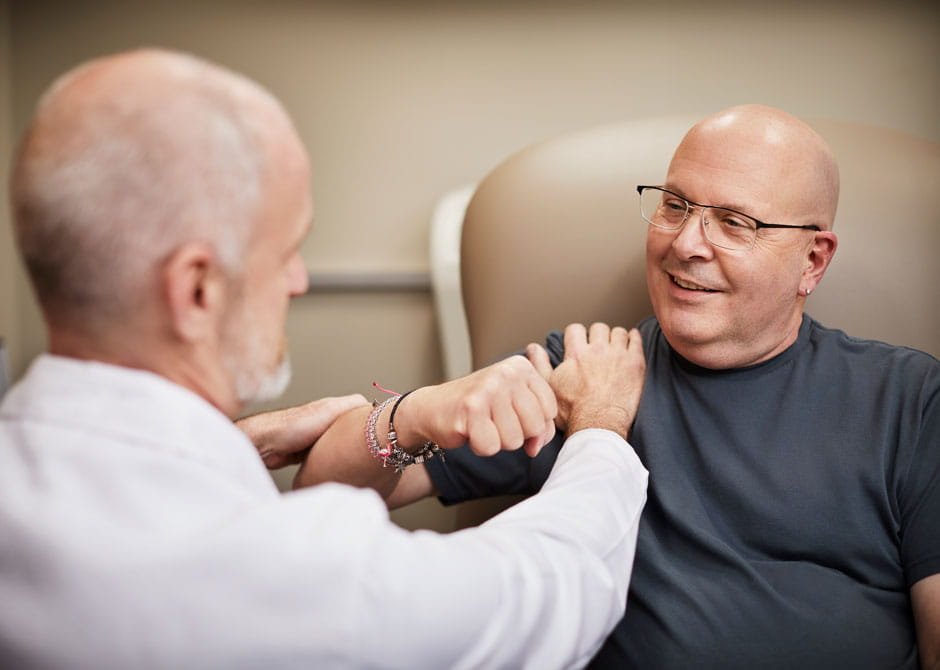 Early symptoms of amyotrophic lateral sclerosis (ALS) can resemble those of other neurological disorders, making the disease difficult to diagnose.
Early symptoms of amyotrophic lateral sclerosis (ALS) can resemble those of other neurological disorders, making the disease difficult to diagnose.
If you’re experiencing any worrisome symptoms, you should make an appointment with the dedicated team of neurological experts in the ALS/Motor Neuron Disease Clinic at The Ohio State University Wexner Medical Center in Columbus, Ohio.
That’s your best chance to find answers to what’s happening with your body and to receive a diagnosis in a caring and proactive environment.
What are the symptoms of ALS?
People with ALS, also called Lou Gehrig’s disease, often experience symptoms differently. Symptoms progress slower in some people and more rapidly in others. Early symptoms might mimic those of other diseases or be ignored as simply a sign of aging. This is why ALS can be so difficult to diagnose.
Early symptoms of ALS
Initial warning signs of ALS include:
- Muscle twitches or cramps
- Muscle weakness in arm, leg or chest
- Tight or stiff muscles
- Slurred speech
- Difficulty with simple tasks, like buttoning a shirt or tying a shoe
How will my ALS symptoms progress?
Since the disease is degenerative, these symptoms will worsen over time. More advanced symptoms of ALS include:
- Loss of ability to walk, and eventual paralysis
- Difficulty breathing (dyspnea), to the point a ventilator may be needed
- Trouble swallowing (dysphagia)
- Inability to talk
ALS symptoms and diagnosis
Stephen Kolb, MD, PhD, explains the symptoms of amyotrophic lateral sclerosis (ALS) and how the disease is diagnosed.
At what age does ALS start?
Most people who develop ALS do so between the ages of 40 and 70; the average age is 55.
How is ALS diagnosed?
ALS is difficult to diagnose and typically mimics symptoms of other motor neuron or neuromuscular disorders. As one of the largest neuromuscular centers in the country, we can provide a second (or even third) opinion to help give you the answers and the care you need.
There is no definitive test for ALS, but neurologists in our ALS Clinic will use various diagnostic tools to confirm an ALS diagnosis.
Tests we might perform include:
- Neurological exam – We begin with a complete family history and then examine muscle weakness, twitches, spasticity and reflexes.
- Blood tests – These will help us rule out other conditions, such as thyroid disease, certain cancers and autoimmune disorders that have similar symptoms.
- Electromyography (EMG) and nerve conduction studies (NCS) – This test measures the electrical activity and conductivity of muscles and nerves.
- Imaging – Other imaging tools, such as computed tomography (CT) scans or magnetic resonance imaging (MRI), may be used to give us a clearer picture of what’s happening in your brain or spine.
- Muscle biopsy – A small sample of muscle is extracted and examined under a microscope.
- Genetic testing – There are certain gene mutations we know are responsible for ALS. A blood test can identify if one is present.
Using results from a combination of these tests, a neurologist may be able to tell if a person has ALS. Sometimes the results are inconclusive, especially in the early stage of the disease. In these cases, we’ll monitor your symptoms and repeat these tests later to look for changes.
After an ALS diagnosis – what’s next
If you receive an ALS diagnosis, our team at the ALS Clinic at the Ohio State Wexner Medical Center will work to develop a personalized plan to give you the best possible quality of life.
We have the resources to manage your ALS care conveniently in one location and provide you with the latest treatment advancements and clinical trials.
Additional Information
Please bring to your first appointment all records, written reports and lab results from neurologists or referring physicians, as well as a CD of MRI and other imaging results. Also prepare a written family history of neurological diseases for our discussion during your visit.

